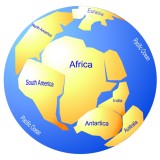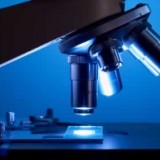For a glimpse into the strategy, psychology and ethics of the corporate world, read the Dilbert cartoons. They can range from humorous and ironic to cynical and chilling as they reveal the deviousness of the human character unleashed by the influence of power, authority and money. A recent example from March 17, 2012 is particularly poignant.
Dilbert and Alice are sitting at a board meeting while their boss is outlining the corporate response to proposed government legislation. “Our company opposes passage of the new internet law because it would be bad for our business,” he pronounces. “But that sounds selfish,” he adds, “so we’ll issue a press release saying the new law would impinge freedom of speech.” Alice, with her usually caustic bluntness, summarizes, “So…we’re selfish liars.” To which the boss retorts, “You can’t get more free than that.”
A few moments considering this exchange will yield unsettling results that are, unfortunately, substantiated by recent research.
The University of Toronto’s Rotman School of Management, together with the University of California, Berkley, recently published studies in the Proceedings of the National Academy of Sciences that substantiate the inclination of the wealthy to lie, cheat and break the law. The studies conclude that, “It’s people at the top of the income scale for whom honesty, integrity and generosity seem to be a challenge” (Ibid.).
The authors of the paper are quick to provide the qualifier that these findings do not necessarily describe or predict the behaviour of single individuals. Like all such sociological studies, the conclusions are a generalization. But they do confirm the findings of other studies that wealthy people “have a reduced concern for others” (Ibid.) and that CEOs of large corporations can have higher psychopathic profiles than prison inmates “diagnosed with psychopathic personality disorders” (Guardian Weekly, Nov. 18/11).
This is not a mere academic matter. For consumers, for governments, for voting citizens and for society as a whole, it is an advertisement to be cautious of promises, claims and guarantees made by the rich and the powerful. In our economic, industrialized and technological world, this usually means investors, corporations and their representatives. Generous offers commonly come with hidden attachments that, if not devious, can be misleading and hollow. Assurances of environmental safety, economic improvement and social benefits are often exaggerated or patently false. Risks are routinely minimized while merits are maximized.
The promotion of smoking by tobacco corporations is a classical example. It boggles the ethical mind how an executive with information that cigarettes cause cancer and death could diligently defend and promote such a product. A more current example is the funding by the fossil fuel industry of anti-science movements with the sole purpose of confusing the global warming issue so that corporations can delay regulations on their profitable extraction of gas, oil and coal — climatologists argue, with increasing desperation, that we must change energy sources and cut greenhouse gas emissions immediately to avoid catastrophic consequences.
Ethics hasn’t dissuaded the wealthy from investing wherever the returns are highest. The quest for profit seems disconnected from the negative social, cultural and environmental consequences. Those with money to invest seem undeterred by the inevitable oil spills that will result from the Northern Gateway pipeline and the subsequent stream of super-tankers enticed into demonstrably dangerous waterways. Salmon farming, against withering scientific evidence of extensive damage to marine ecologies, doggedly continues to operate their open net-pens. Industrial fishing of our oceans represents a pillaging that can only end in ecological and social disaster. Genetically engineered crops and the centralized control of seeds by transnational corporations are proving to be exercises in power and profit rather than being of benefit to humanity.
Indeed, the subject of wealth and ethics has become particularly relevant during the last few decades given the shift in economic power away from the lower and middle classes toward the affluent few. Whether or not this trend is a measure of their consolidation of influence and control is a moot point. But the pressures of lobbying, financing and investing seem to be eroding democratic processes while favouring the ascent and security of the wealthy.
All this has environmental implications. If most people in a society have concerns about the health and viability of the ecologies that sustain and enhance the quality of their lives, but the power structure is indifferent to those concerns, then the machinery of industry and investment will continue to exploit and abuse nature in the interests of profit.
The environmental result, so far, is a deepening planetary mess, mostly because of the initiatives of the wealthy and influential. Of course, society has also benefitted hugely from their ingenuity and assertiveness. The comfort, safety, convenience, affluence and health of our collective well-being owes much to the wealthy and their initiatives. But their ethical lapses have also led us into an intensifying ecological crisis that is becoming entrenched, structural, systemic and dangerous. Indeed, unless these negative effects are dramatically curtailed by a redirection of initiative, investment and governance, the consequence could be catastrophic for everything we know and value. Perhaps the time has come for the wealthy to realize that Earth and all its inhabitants can no longer afford their kind of freedom.





